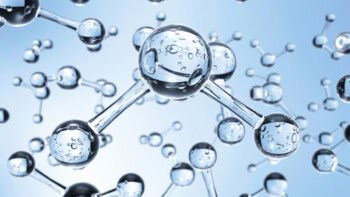
DNA may contain the blueprint for life but it takes proteins to read the plan and build an organism. The mechanism of this vital biological process has remained a mystery but now researchers in France are proposing a physical model wherein individual proteins can “slide” freely along DNA strands in search of target sequences.
The team envision the process involving ‘DNA-binding proteins’ swarming around the iconic double helix on account of electric attraction — proteins have a net positive charge and DNA has a net negative charge. Miraculously, these proteins can then bind to exactly the right section of the long, coiling DNA so they can carry out vital functions such as copying genetic information and translating genes into templates for protein production.
Vincent Dahirel of the Pierre and Marie Curie University in Paris and his colleagues have reduced this complex biological set-up into more general physical shapes. Using Monte Carlo computer simulations, DNA was modelled as a long cylinder, and the protein as one of four solids: a sphere; a cylinder; or a cube or cylinder with a groove carved in one side.
Grooved cylinders
Dahirel and colleagues find that as the first three protein-shapes approach the DNA the electric attraction continues unabated. However, in the case of grooved cylinders, the proteins start to be repelled once they get to within 0.1 to 0.75 nm of the DNA.
Dahirel and his team attribute this force to the solution that bathes these biological molecules. As the protein approaches the DNA, positively charged ions in the solution become trapped in the gap, driving more water into the region as a result of osmosis. If the inward electric attraction is balanced by the outward water pressure, the protein can slide along the helix until it reaches its target. The hydrogen-bond attraction between DNA and protein then overpowers the osmotic barrier and the two bind together.
The research is published in Physical Review Letters.



